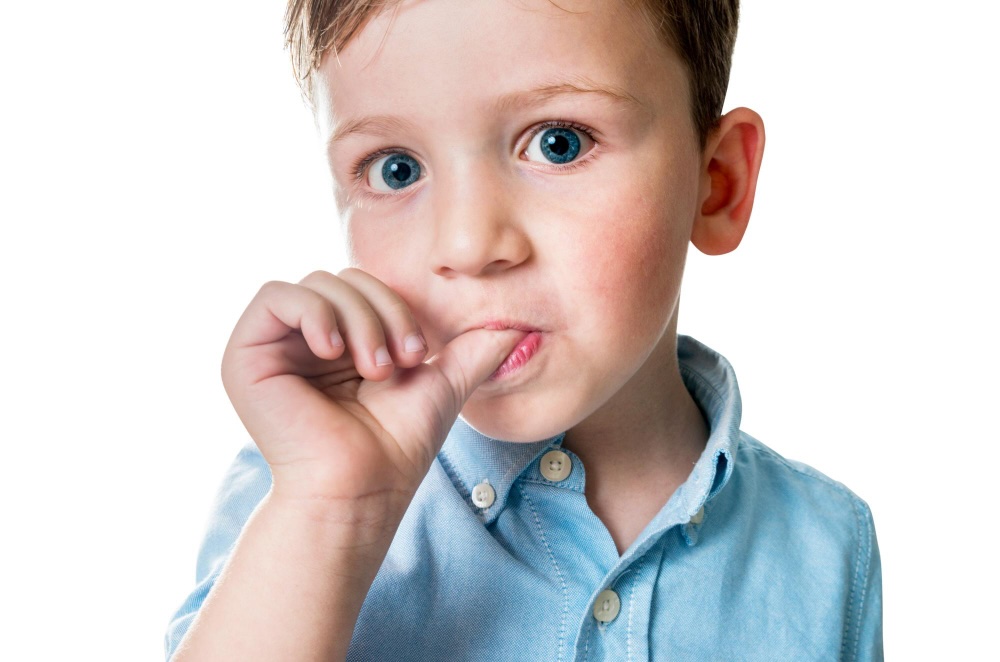Thumb sucking is normal in infancy, but when it lingers into early childhood, it can start shaping a child’s bite and jaw growth. If you don’t address it soon enough, this comforting habit may lead to long-term issues with teeth, jaw alignment, and even airway development.
At Orthobar, we see firsthand how habits like thumb sucking and pacifier use can affect a child’s developing smile.
Because these behaviors are tied to comfort and self-soothing, they can be some of the most challenging to break and can significantly impact how teeth and jaws develop.
Read on to learn how to stop thumb sucking effectively, what signs to watch for, and when to talk to a professional about protecting your child’s smile and overall development.
Oral Habits: Why Thumb Sucking Is Hard to Break
Thumbs and pacifiers aren’t “bad behaviors.” They’re self-soothing tools tied to comfort and security. Babies often begin sucking as a natural reflex, and for many, it becomes their go-to way of easing stress or helping themselves fall asleep.
From an orthodontic perspective, the mouth is a system of balanced forces. The lips, cheeks, and tongue all work together to guide teeth into place.
When a thumb, finger, or pacifier regularly enters that system, it can upset the balance. And the more the balance is upset by thumb sucking, the more likely it is to nudge teeth and jaws in the wrong direction.
Thumb Sucking Is Different From Child to Child
It’s also important to recognize that not all habits look the same. Some children suck gently and only at bedtime, while others apply constant or forceful pressure throughout the day.
The oral habit’s overall intensity, frequency, and duration all play a significant role in how much it affects dental development.
Parents who notice changes in the way their child’s teeth are coming in, or who hear speech differences, may be seeing early signs that an oral habit is interfering with growth.
The Cons of Thumb Sucking (Orthodontic Impacts)
Parents often ask us, “What are the real cons of thumb sucking?”
Our personal experience and industry research have found that repetitive pressure can cause trauma to the palate and lead to the following issues over time:
- Dental misalignment: Upper front teeth that flare forward, lower front teeth that tip back, and open bites where the front teeth don’t meet.
- Skeletal changes: Narrowing of the upper jaw and constricted arches that influence facial balance.
- Functional issues: Altered swallowing patterns, speech differences, and sometimes airway concerns.
One thing to keep in mind is that these concerns are not just cosmetic. They can affect chewing, breathing, and long-term oral function.
Research in pediatric dentistry also shows that prolonged thumb sucking is strongly associated with malocclusions such as open bites and crossbites.
Pacifiers vs. Thumb Sucking: Which Is Worse?
Both habits can create similar orthodontic problems, but there’s one practical difference: control. Curbing a pacifier habit may be easier for you because:
- You can remove pacifiers and limit their use. Many families aim to wean by ages 2–3.
- Thumbs are always available, often more forceful, and more challenging to stop.
We recommend that by around age 3, children should begin reducing pacifier use, and thumb sucking should be addressed more seriously by ages 4–5 if it hasn’t stopped naturally.
How Oral Habits Affect Growth and Development
Childhood is a period of rapid jaw growth. Persistent oral habits can influence that window and contribute to:
- High, narrow palates that can be connected to airway/breathing issues.
- Open bites that keep the upper and lower jaws from overlapping.
- Class II pattern, like the upper jaw appearing ahead of the lower.
- Imbalances with tongue posture, swallowing, and speech patterns.
The earlier these habits are stopped, the easier it is to guide growth back on track without complex interventions.
Treatment Options: A Team Approach to Breaking Oral Habits
If your child is still sucking their thumb or using a pacifier beyond age 5–6, a team-based plan can make change easier and more effective.
At Orthobar, we often collaborate with other experts to support your child’s dental development:
- Orthodontists: Guide jaw growth, correct bite problems, and, when needed, place habit-breaking appliances (such as a palatal crib or bluegrass appliance).
- Myofunctional therapists: Retrain tongue posture, swallowing, and nasal breathing to restore natural muscle balance.
- Speech therapists: Address speech concerns linked to open bites or tongue thrust.
- Pediatricians: Track overall health and guide behavior strategies.
- Pediatric dentists: Monitor developing teeth and reinforce habit counseling at early checkups.
This combined approach helps address not only the habit itself but also its impact on growth, speech, and airway development.
How to Stop Thumb Sucking: Tips for Parents
Small, consistent steps work best when you’re helping your child break a thumb sucking habit, and sharing the plan with them can help them feel in control.
Here are some steps you can take to help them overcome their oral habit:
- Set milestones and celebrate: Create “thumb-free” charts and reward streaks.
- Use gentle reminders: Thumb guards, mittens, or a subtle cue can help a child catch themselves.
- Offer comfort alternatives: A favorite stuffed animal, blanket, or calming bedtime routine can make letting go easier.
- Focus on nighttime: Many kids suck during sleep; try breathable mitts or a different bedtime wind-down.
- Keep it positive: Encouragement beats shaming every time; praise effort, not perfection.
- Get professional support: If at-home efforts stall, ask about myofunctional therapy, speech therapy, or a habit appliance.
These strategies work best when introduced gradually, supported with encouragement, and paired with professional guidance if needed.
Final Thoughts On Orthodontics and Thumb Sucking
Breaking oral habits isn’t only about straight teeth — it’s about helping muscles, jaws, and airway work in harmony as your child grows. With the proper support, most kids can quit comfortably and regain healthy development.
At Orthobar, we’ll guide your family through each step, from habit counseling and growth monitoring to gentle, age-appropriate treatment when needed. If you’re concerned about a thumb or pacifier habit, we’re here to help!
Schedule your free consultation today and discover the Orthobar Difference.






